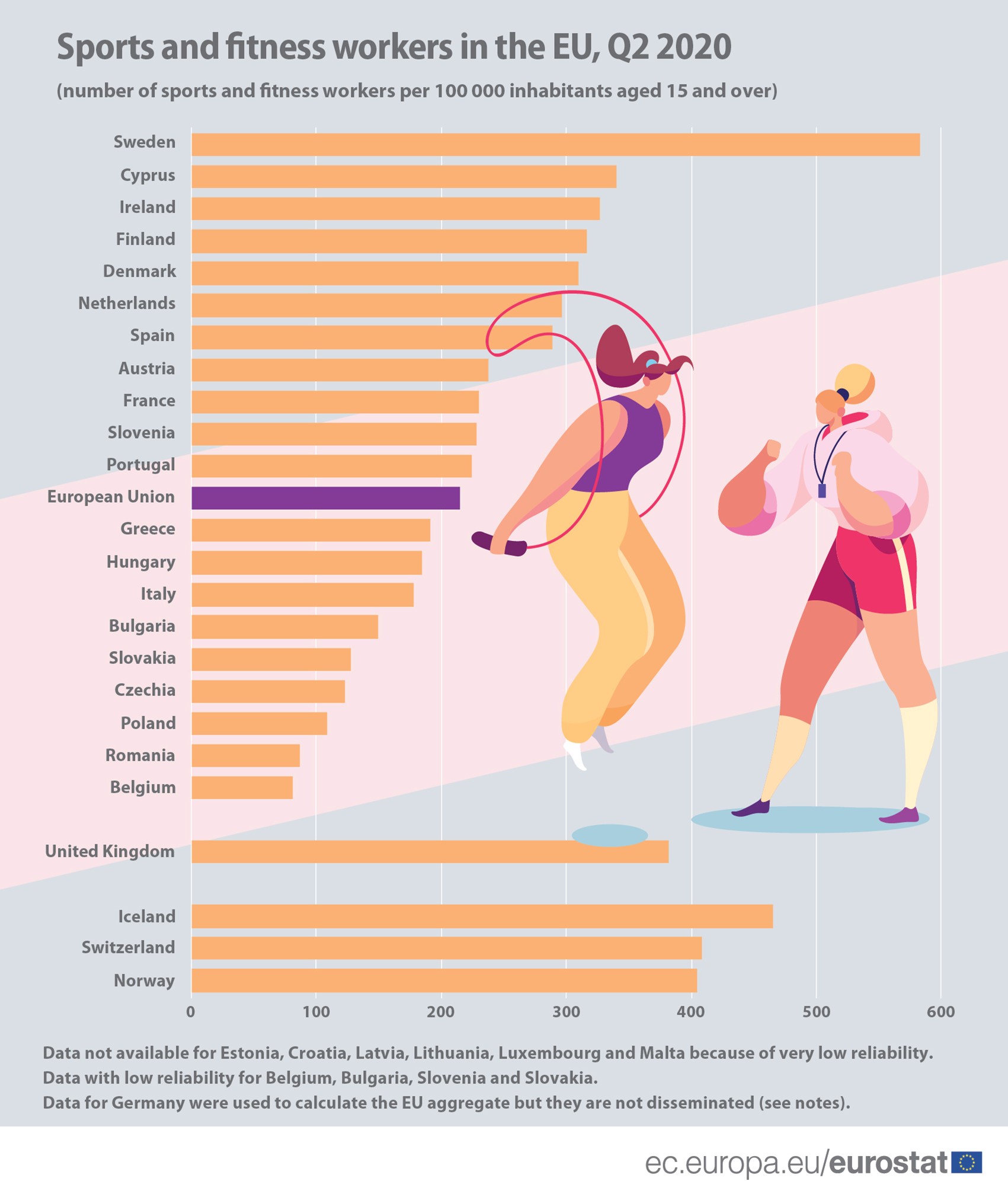In the second quarter of 2020, 801 700 people aged over 15 in the EU were employed in the sports and fitness sector, representing 0.4% of total employment.
The majority of sports workers were men (57%) and almost one in two sports workers (48%) were aged between 15-34 years. Almost a third (30%) were aged 35-49 years and 23% were aged 50 or above.
Sport and fitness workers are among those professions likely to be affected by safety measures implemented in response to the COVID-19 pandemic. Compared with the first quarter of 2020, the total number of sports workers decreased by 6%. Young sport workers aged 15-34 were the most affected (-18% for women, -13% for men).
Sweden has by far highest number of sports workers
For the EU as a whole, there were 215 sports workers per 100 000 inhabitants aged 15 and above in the second quarter of 2020.
Among the individual EU Member states, Sweden recorded by far the highest rate of sports workers (583 per 100 000 inhabitants aged 15 and above), followed by Cyprus (340), Ireland (327), Finland (316) and Denmark (310).
In contrast, the lowest rates were registered in Belgium (81 sports workers per 100 000 inhabitants aged 15 and above) and Romania (87), followed by Poland (109), Czechia (123) and Slovakia (128).
Notes:
- Sports and fitness workers in this article are defined under ISCO-08 classification (342 Sports and fitness workers). Sports and fitness workers prepare for and compete in sporting events for financial gain; train amateur and professional sportsmen and women to enhance performance; promote participation and standards in sports; organize and officiate sporting events; and provide instruction, training and supervision for various forms of exercise and other recreational activities.
- Data not available for Estonia, Croatia, Latvia, Lithuania, Luxembourg and Malta because of very low reliability.
- Data with low reliability for Belgium, Bulgaria, Slovenia and Slovakia.
- Data for Germany were used to calculate the EU aggregates but they are not disseminated due to technical issues with the introduction of the new German system of integrated household surveys, including the LFS. For more information, see here.
- Data is based on the European Union labour force survey (EU-LFS). For more information on the European Union labour force survey, please look at our methodological Statistics Explained articles.
- The European Union (EU) includes 27 EU Member States. The United Kingdom left the European Union on 31 January 2020. Further information is published here.
Source data:
To contact us, please visit our User Support page.
For press queries, please contact our Media Support.


